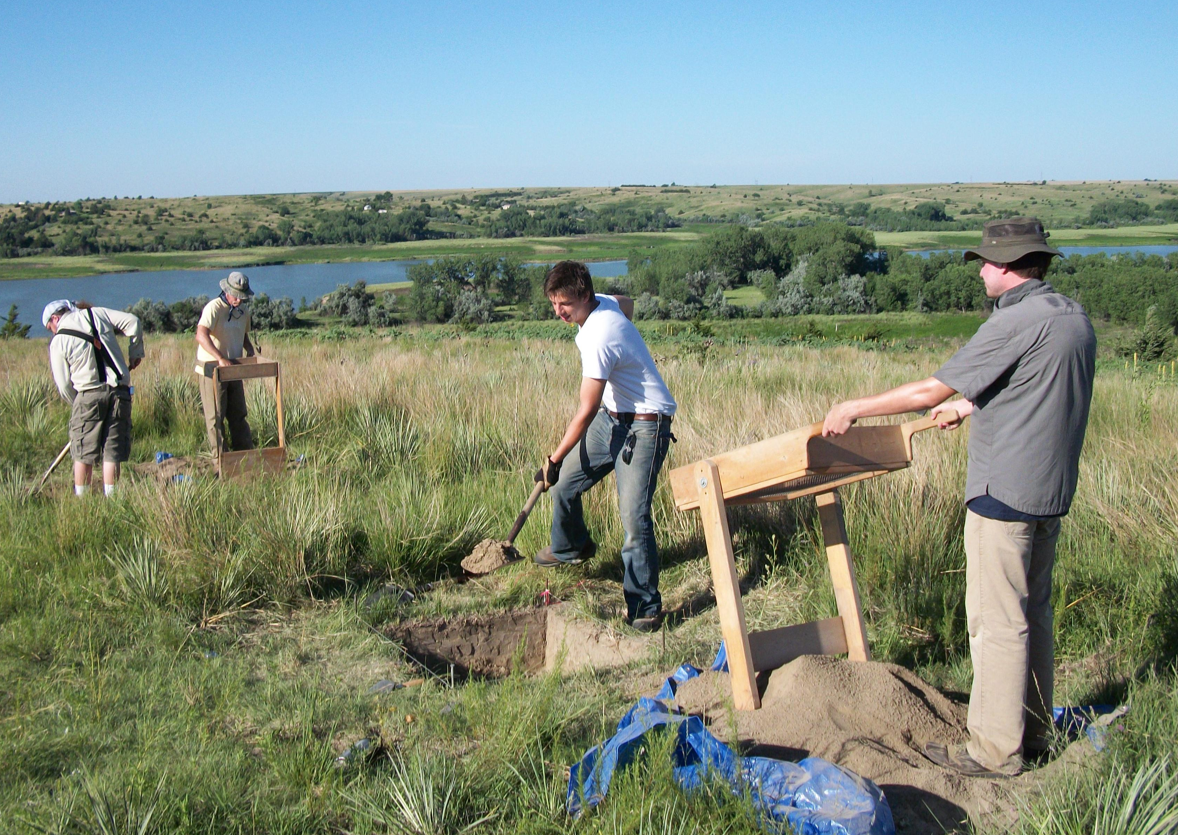
The University of Nebraska State Museum’s Nebraska Archaeological Survey is conducting further archaeological investigations at several prehistoric sites this summer at Red Willow Reservoir (Hugh Butler Lake) in Frontier County.
Additional funds were granted recently to continue this field work, which began in 2010. Support for this project is provided by the Department of Interior’s Bureau of Reclamation under a new five-year cooperative agreement with UNL. These investigations will enable archaeologists to assess the scientific potential of cultural resources within this area of the Great Plains. The project will continue through 2015.
The Nebraska Archaeological Survey is directed by Alan Osborn, curator of anthropology at the University of Nebraska State Museum. Later this month, Osborn will begin a new faculty appointment at the University of Nebraska at Omaha, while continuing his curatorial role at the museum.
Survey crew members include Bran Mims, graduate student at East Carolina University; Steve Reynolds, formerly liaison for UNO’s Bethsaida Project in Israel; as well as Matt Marvin and Steve Sarich, who are both undergraduate anthropology majors at UNL.
Test excavations are being conducted at six prehistoric archaeological sites within the boundaries of Red Willow Reservoir. This testing program is built upon recent archaeological surveys within the reservoir area carried out by the Nebraska Archaeological Survey in 2007 and 2010 and the Denver Museum of Nature and Science in 2005. One of these sites contains bison bones, chipped stone tools, and several small cooking pits. This site may represent a small meat and plant processing location near Red Willow Creek. Evidence suggests that Plains people visited this location several times between 200 B.C. and 1200 A.D. The reservoir is managed jointly by the Nebraska Game and Parks Commission and the Department of the Interior’s Bureau of Reclamation.
Past archaeological investigations at Red Willow and Medicine Creek Reservoirs as well as neighboring lands administered by the Bureau of Reclamation have made significant contributions to our knowledge and understanding of Native American life throughout the Great Plains region. The Nebraska Archaeological Survey is an important part of the museum’s archaeology and anthropology program.
More details at: http://go.unl.edu/bkh